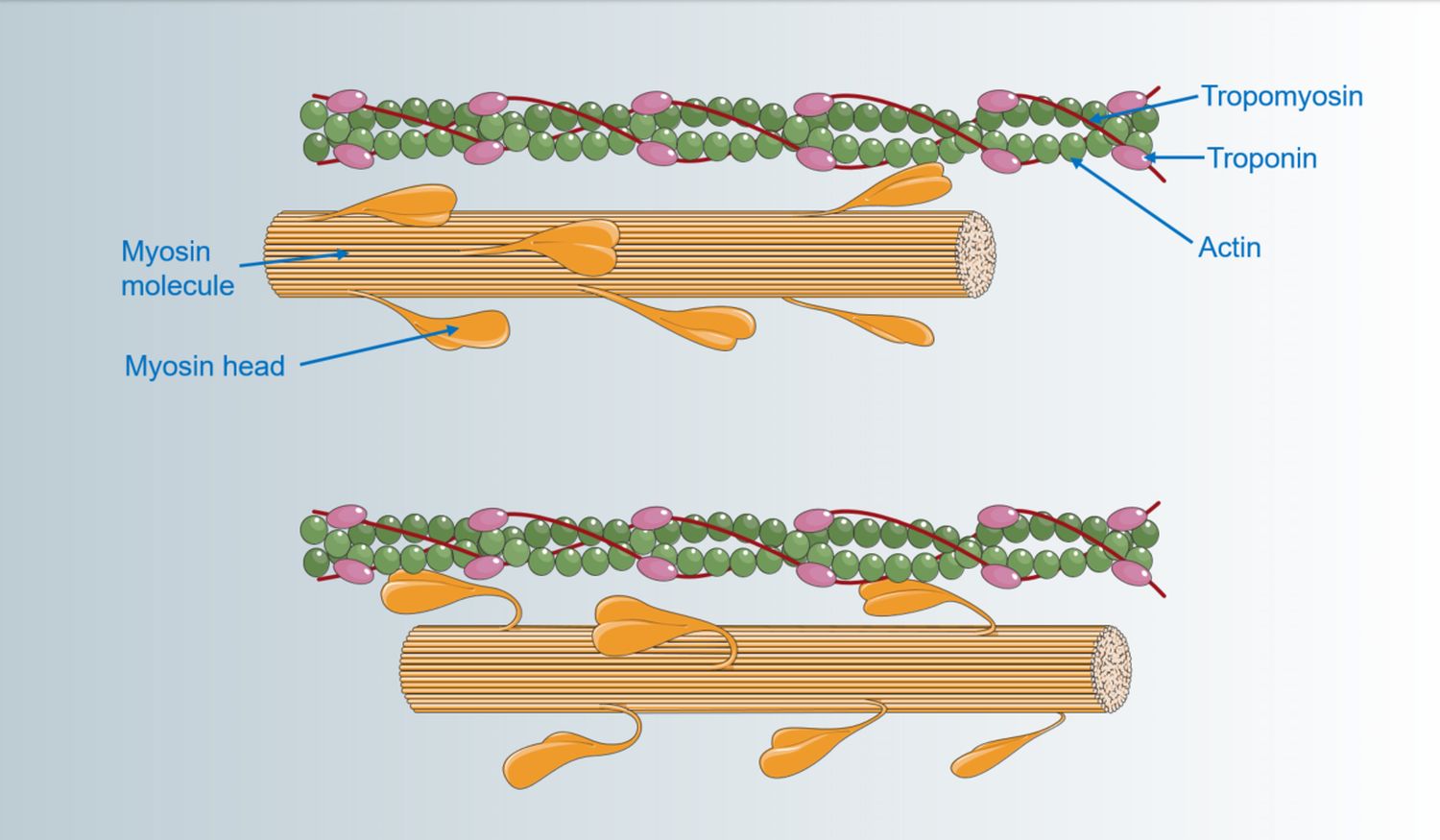
Myosin is a fascinating protein that plays a crucial role in muscle contraction and many other cellular processes. Ever wondered how your muscles move or how cells transport materials internally? Myosin is the answer. This protein acts like a tiny motor, converting chemical energy into mechanical work. Found in nearly every cell type, it’s essential for functions ranging from heartbeat to cell division. Understanding myosin can shed light on how our bodies function at a microscopic level. Ready to dive into some intriguing facts about this powerhouse protein? Let’s get started!
What is Myosin?
Myosin is a fascinating protein that plays a crucial role in muscle contraction and various cellular processes. It acts like a tiny motor, converting chemical energy into mechanical work. Let's dive into some intriguing facts about myosin.
-
Myosin is a motor protein that interacts with actin filaments to generate force and movement in cells.
-
There are at least 18 different classes of myosin, each with unique functions and structures.
-
Myosin II is the most well-known type, primarily responsible for muscle contraction.
-
Myosin proteins are found in nearly all eukaryotic cells, from yeast to humans.
-
The head region of myosin binds to actin and hydrolyzes ATP to produce energy for movement.
-
Myosin tails often help in cargo transport within cells, such as moving vesicles and organelles.
Myosin in Muscle Contraction
Muscle contraction is one of the most well-studied functions of myosin. Here's how myosin contributes to this vital process.
-
Myosin II forms thick filaments in muscle fibers, working with actin to produce contraction.
-
During contraction, myosin heads "walk" along actin filaments, pulling them closer together.
-
The sliding filament theory explains how myosin and actin interactions shorten muscle fibers, causing contraction.
-
ATP is essential for myosin function, providing the energy needed for muscle contraction and relaxation.
-
Myosin light chains, smaller subunits of myosin, regulate its activity and are crucial for proper muscle function.
-
Mutations in myosin genes can lead to muscle diseases, such as hypertrophic cardiomyopathy.
Myosin in Cellular Processes
Beyond muscle contraction, myosin plays vital roles in various cellular activities. Here are some examples.
-
Myosin V is involved in transporting organelles and vesicles along actin filaments within cells.
-
Myosin VI moves in the opposite direction of most myosins, playing a unique role in endocytosis and cell migration.
-
Myosin VII is essential for hearing, as it helps in the function of hair cells in the inner ear.
-
Myosin IX has a role in regulating cell shape and movement by interacting with the cell's cytoskeleton.
-
Myosin X is involved in the formation of filopodia, slender protrusions that help cells sense their environment.
-
Myosin XI is crucial for plant cell growth, aiding in the transport of organelles and other materials.
Myosin in Health and Disease
Understanding myosin's role in health and disease can provide insights into various medical conditions. Here are some key points.
-
Mutations in myosin genes can cause a range of genetic disorders, including some forms of deafness and blindness.
-
Myosin-related diseases often involve problems with muscle function, such as myopathies and cardiomyopathies.
-
Research on myosin inhibitors is ongoing, with potential applications in treating cancer and other diseases.
-
Myosin dysfunction can contribute to neurodegenerative diseases, such as Alzheimer's and Parkinson's.
-
Myosin-targeted therapies are being explored for their potential to treat heart failure and other cardiovascular conditions.
-
Understanding myosin's role in cell division can help develop new cancer treatments.
Fun and Surprising Facts About Myosin
Myosin has some lesser-known, fun facts that highlight its versatility and importance. Check these out.
-
Myosin was first discovered in 1864 by Wilhelm Kühne, a German physiologist.
-
The name "myosin" comes from the Greek word "mys," meaning muscle.
-
Myosin can move at different speeds, with some types capable of rapid movement while others are slower but more powerful.
-
Some myosins can generate force without moving, acting as anchors within cells.
-
Myosin's ability to convert chemical energy into mechanical work is similar to how engines function.
-
Myosin's structure is highly conserved across species, indicating its fundamental role in cellular processes.
-
Researchers use advanced techniques, such as cryo-electron microscopy, to study myosin's structure and function in detail.
-
Myosin's versatility makes it a popular subject of study in cell biology, biophysics, and medical research.
Myosin: The Unsung Hero of Movement
Myosin plays a crucial role in our bodies. It powers muscle contractions, helps cells move, and even assists in cell division. Without it, simple tasks like walking or even blinking would be impossible. This protein works tirelessly behind the scenes, ensuring our muscles function smoothly.
Understanding myosin's functions can give us insights into various medical conditions. For example, defects in myosin can lead to muscle diseases and heart problems. Researchers continue to study this protein to develop treatments for these conditions.
So, next time you take a step or lift an object, remember myosin's role. It's a small but mighty protein that keeps us moving and living our best lives. Knowing these facts can help us appreciate the complex machinery within our bodies.
Was this page helpful?
Our commitment to delivering trustworthy and engaging content is at the heart of what we do. Each fact on our site is contributed by real users like you, bringing a wealth of diverse insights and information. To ensure the highest standards of accuracy and reliability, our dedicated editors meticulously review each submission. This process guarantees that the facts we share are not only fascinating but also credible. Trust in our commitment to quality and authenticity as you explore and learn with us.
